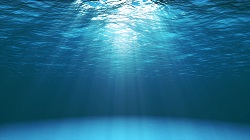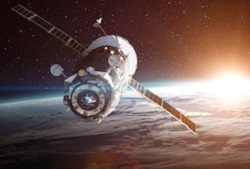Shields up for a manned mission to Mars
There are a number of key ways to reduce exposure to ionising radiation, which can be 100 times more intense in space than on Earth. Increasing the distance from the radiation source and decreasing the exposure time and using the appropriate shielding are the usual approaches. Distance is irrelevant in space, cosmic rays being isotropic. Times will be increased rather than decreased according to plans for exploration and colonisation. Passive shielding is the simplest countermeasure, but current materials provide relatively poor reduction of the dose deposited by high-energy cosmic rays for a reasonable thickness to be deployed in space. Within the EU-funded project SR2S (Space radiation superconductive shield), scientists experimented with superconductors to produce an active magnetic shield to deflect cosmic rays, like the Earth's magnetic field protects our planet. A looping superconducting wire carrying a large current will produce an intense magnetic field, 30 000 times stronger than the Earth's magnetic field, to wrap around the spacecraft. The magnetic field will extend to about 10 m in diameter. The rationale is that shielding manned spacecraft from ionising radiation in this way is a prerequisite for exploration missions to the red planet and settling on its surface. Such a magnetic field could drain power that needs to be used for other needs on the spacecraft. SR2S scientists turned to superconductors that allow electrical currents to run unimpeded, meaning these currents can be maintained without access to a power source. The magnetic shield can be charged using the energy from the Sun and remain charged for years. In addition, superconductors work at very low temperatures, making space the ideal setting to use them. The SR2S team chose to use magnesium diboride. This material superconducts at a temperature above 10 Kelvin that is comparable with that in deep space, eliminating the need for the complexity of liquid helium cooling. The superconducting coil tends to get warmer on the side exposed to the Sun, so it would tend to lose its superconductivity. The SR2S project proposed a lightweight, low-energy cryosystem to keep the coil cool. The envisioned technology has proven to be a technology driver, with many terrestrial applications. Two superconducting coils have been built and tested. Results show the feasibility of using such cable for very light magnets. In addition an innovative, long pulsating heat pipe has been designed and built showing its potential for the magnet cryogenic system.






